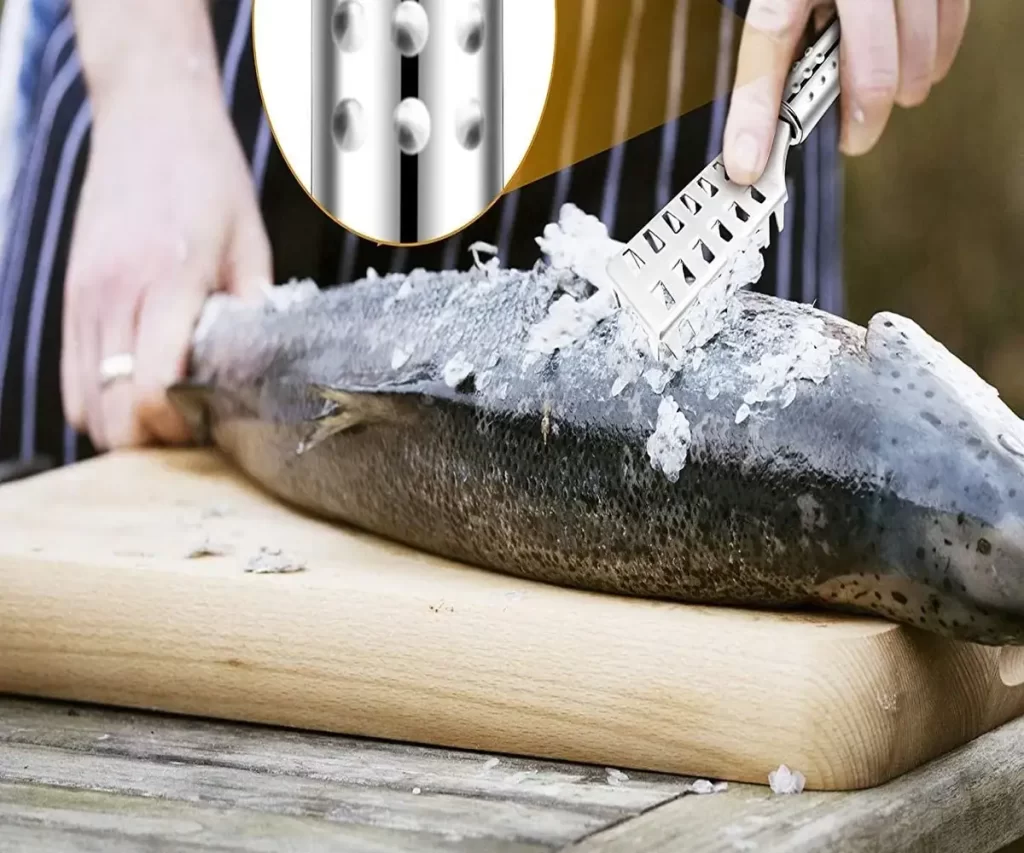
Learning How to Scale a Fish
Scaling a fish is an essential skill for any home cook or professional chef. Whether you’re a seafood enthusiast or just looking to diversify your culinary repertoire, learning how to scale a fish can elevate your cooking game. This comprehensive guide will take you through the step-by-step process of scaling fish, providing valuable insights, tips, and techniques to help you master this fundamental culinary skill.
Why Scale Fish?
Scaling fish is a crucial step in the preparation process for several reasons:
- Enhanced Flavor: Removing scales before cooking allows seasonings and marinades to penetrate the flesh, enhancing the overall flavor of the fish.
- Improved Texture: Scaling helps prevent the fish’s skin from becoming tough and chewy during cooking, resulting in a more pleasant texture.
- Even Cooking: Scaled fish cook more evenly, ensuring that the flesh is properly cooked without overcooking the skin.
- Aesthetic Appeal: Scaled fish present a more appealing appearance on the plate, making them visually pleasing to diners.
Now, let’s dive into the detailed steps and tips for scaling fish.
Equipment Needed
Before you begin scaling a fish, gather the necessary equipment:
- Fish Scaler: There are various types of fish scalers, including handheld scalers with serrated edges, electric scalers, and scraping tools. Choose one that suits your preference and the type of fish you’re working with.
- Cutting Board: Use a sturdy, non-slip cutting board to provide a stable surface for scaling.
- Sharp Knife: A sharp knife is essential for cleaning and gutting the fish after scaling.
- Paper Towels: Keep paper towels handy for wiping off scales and keeping the workspace clean.
- Trash Bag or Container: Have a designated container or bag for discarding scales to streamline the cleanup process.
Step-by-Step Guide to Scaling Fish
Step 1: Prepare Your Workspace
- Clean the Fish: Rinse the fish under cold running water to remove any loose scales, dirt, or debris.
- Secure the Fish: Lay the fish on the cutting board with the belly facing you. Use a non-slip surface or a damp cloth under the cutting board to prevent it from sliding.
Step 2: Choose the Right Tool
Select a fish scaler that suits the size and type of fish you’re working with. Handheld scalers are effective for smaller fish, while electric scalers are ideal for larger varieties.
Step 3: Scaling Technique
Follow these steps for effective scaling:
- Hold the Fish Firmly: Grip the fish by the tail with one hand and use the scaler with the other. Keep a firm grip to prevent the fish from slipping.
- Scale Against the Grain: Start scaling from the tail and work towards the head. Use short, quick strokes against the direction of the scales. This helps lift the scales without damaging the skin.
- Pay Attention to Fins: Scale the area around fins carefully, as scales can be more stubborn in these regions.
- Rotate the Fish: Turn the fish over and repeat the scaling process on the other side.
Step 4: Clean Up
- Wipe Off Excess Scales: Use paper towels to wipe off any remaining scales from the fish and your workspace.
- Dispose of Scales Properly: Collect scales in a designated container or trash bag for easy disposal.
Tips for Scaling Fish Like a Pro
- Choose the Right Scaler: Different fish scalers are designed for specific types and sizes of fish. Make sure to select the appropriate scaler for the task.
- Scale Outdoor if Possible: Scaling can be a messy process, so if you have the option, do it outdoors to minimize cleanup.
- Practice Safety: Be cautious with the scaler and knife to avoid injuries. Keep your fingers away from the blade and work with deliberate, controlled movements.
- Inspect for Residual Scales: After scaling, run your fingers over the fish to check for any missed scales. Remove any remaining scales using the scaler or a knife.
- Scale Whole Fish: It’s generally easier to scale a whole fish before filleting, as the skin provides stability. If you’re planning to fillet the fish, scale it first.
Common Mistakes to Avoid
- Insufficient Scaling: Skipping scales or not removing them thoroughly can affect the taste and texture of the fish.
- Using the Wrong Tool: Using the wrong scaler for the type of fish may result in inefficient scaling and potential damage to the skin.
- Scaling After Filleting: Scaling becomes more challenging once the fish is filleted. It’s best to scale the fish while it’s still whole for easier handling.
- Rushing the Process: Take your time when scaling to ensure you remove all scales properly without damaging the skin.
Conclusion to: How to Scale a Fish
Scaling a fish is a foundational skill that enhances the quality of your seafood dishes. With the right tools, techniques, and a bit of practice, you can scale fish like a pro. Remember to prioritize safety, choose the appropriate scaler, and enjoy the process of preparing fresh, flavorful fish for your next culinary creation. Whether you’re cooking a simple pan-seared fish or an elaborate seafood feast, mastering the art of fish scaling is a rewarding and worthwhile endeavor.